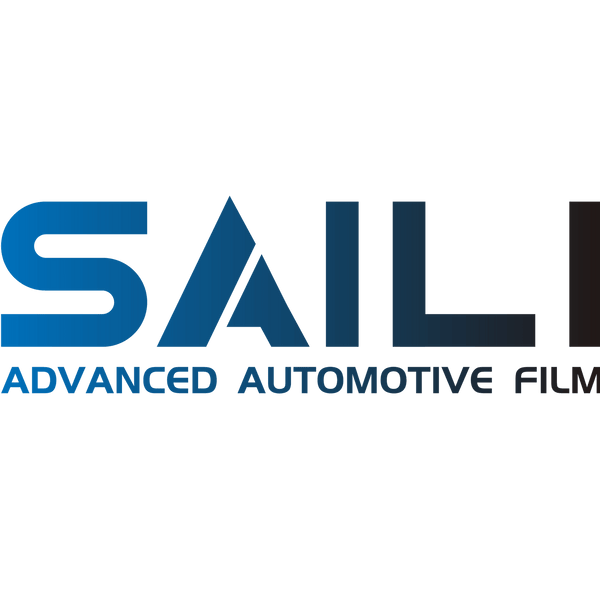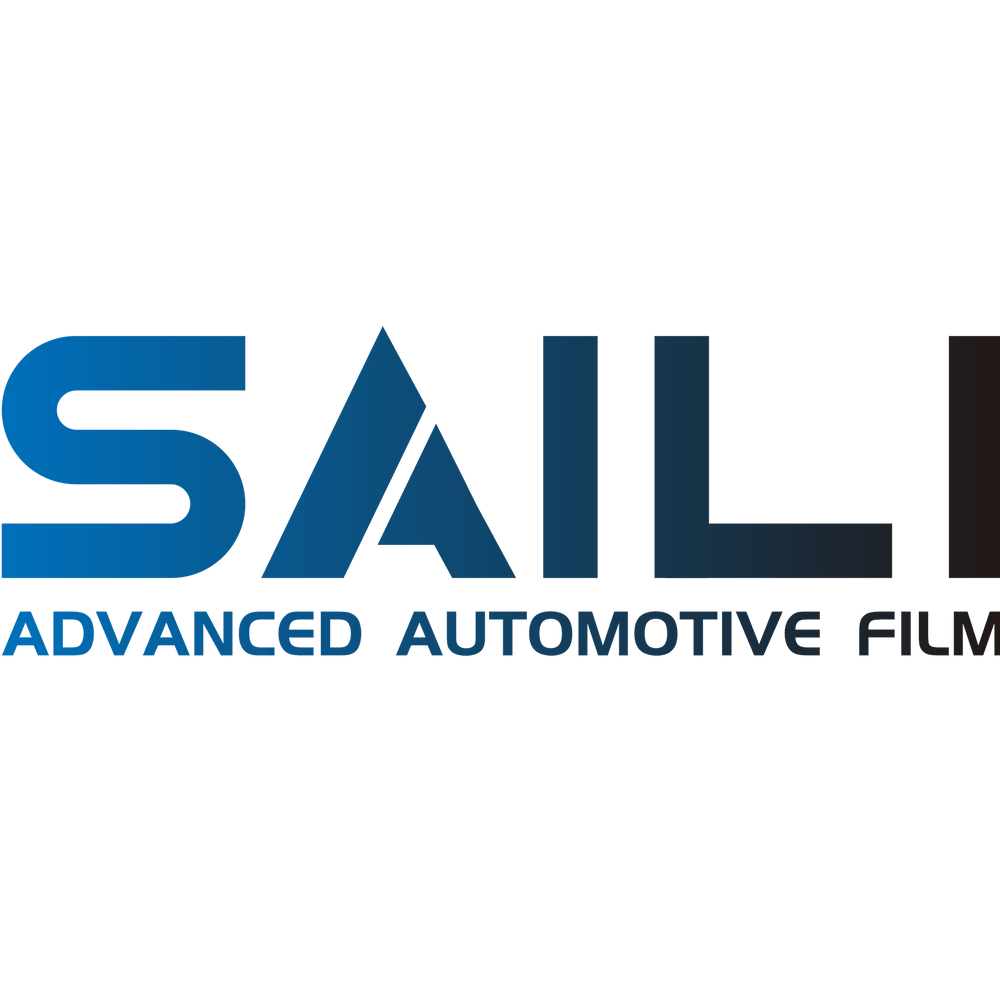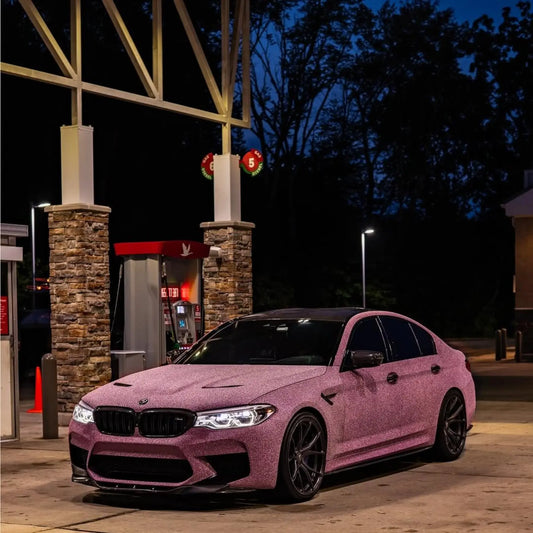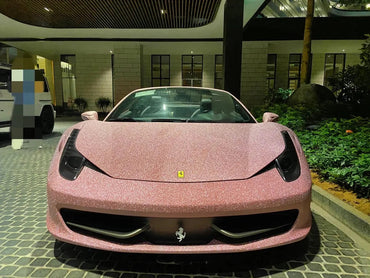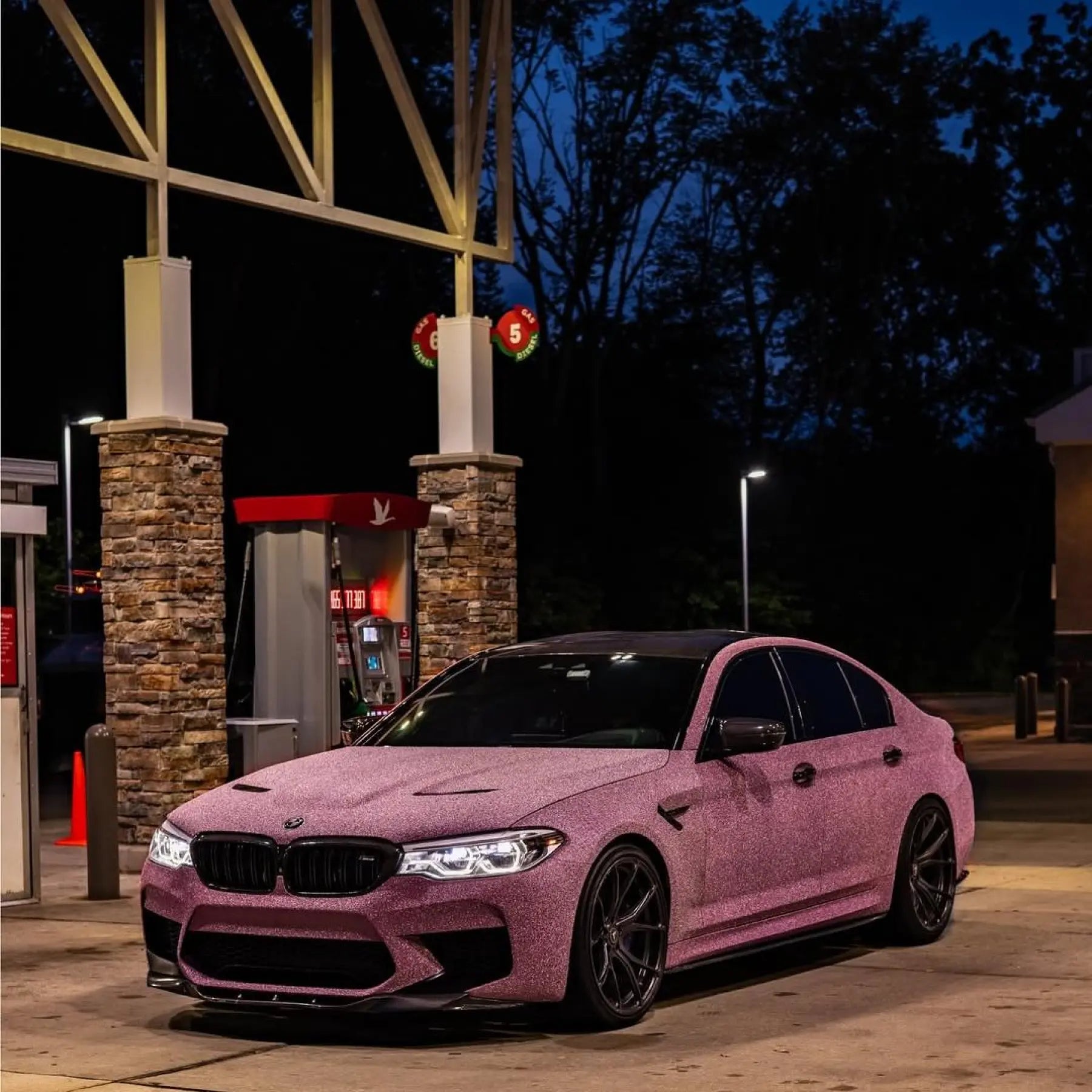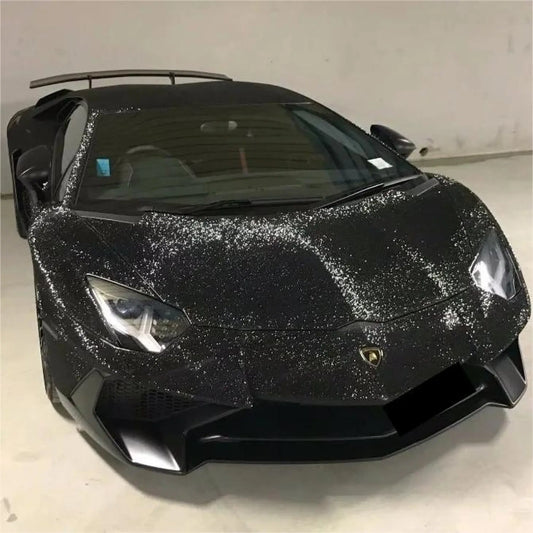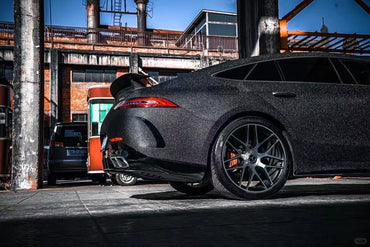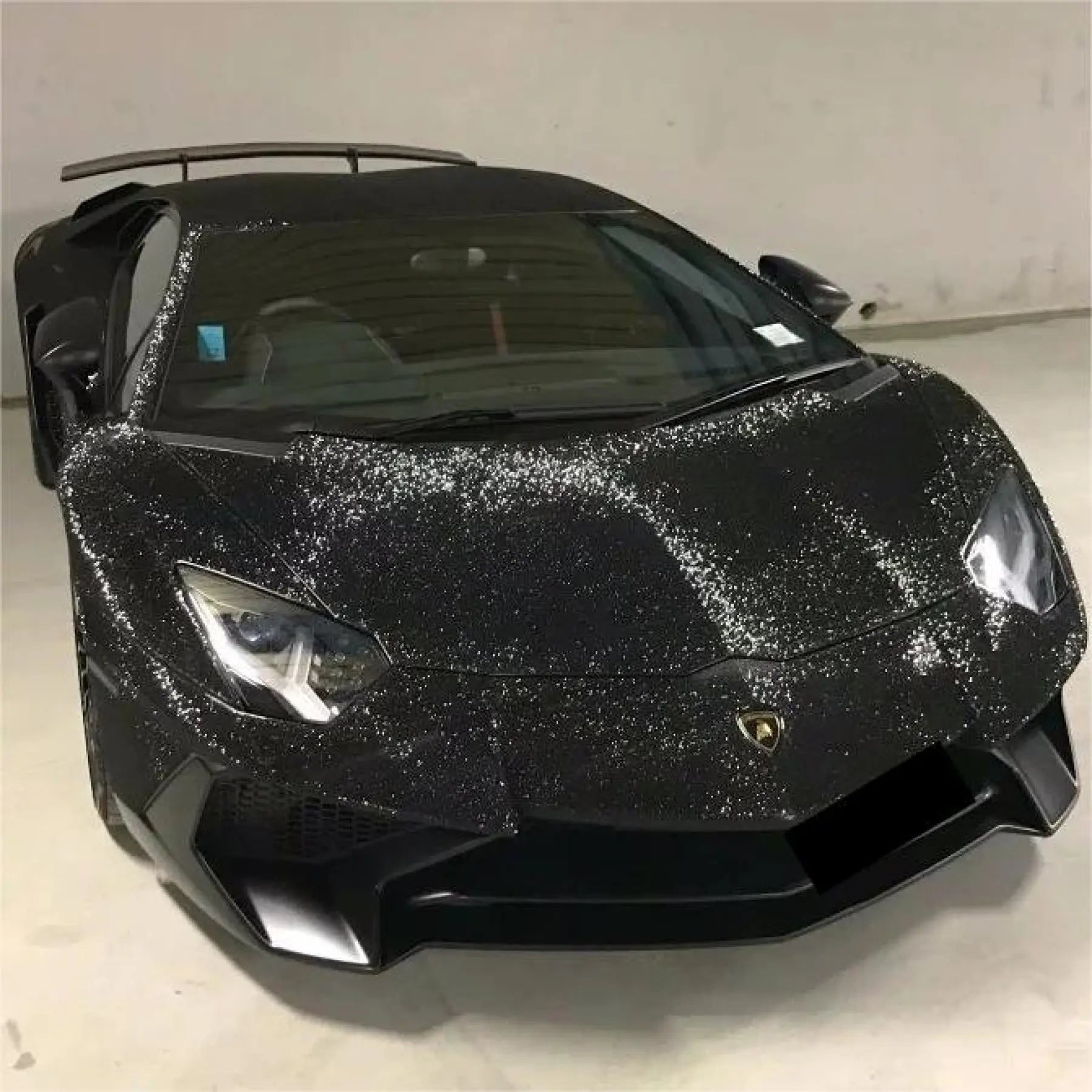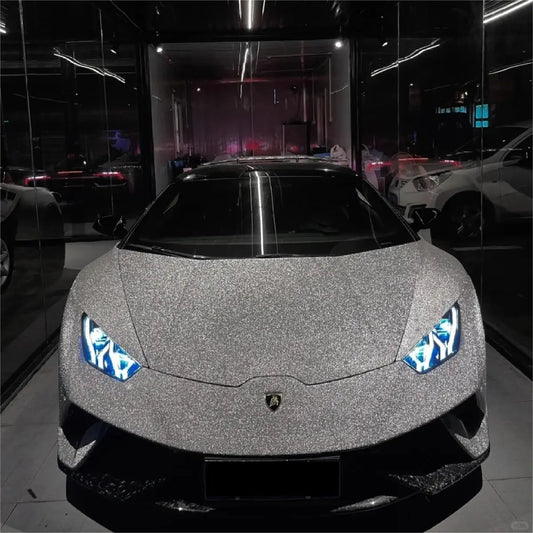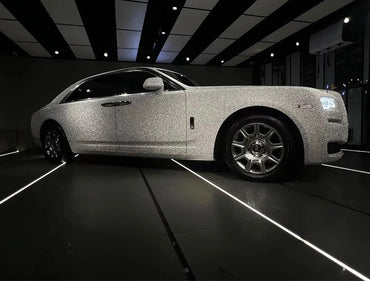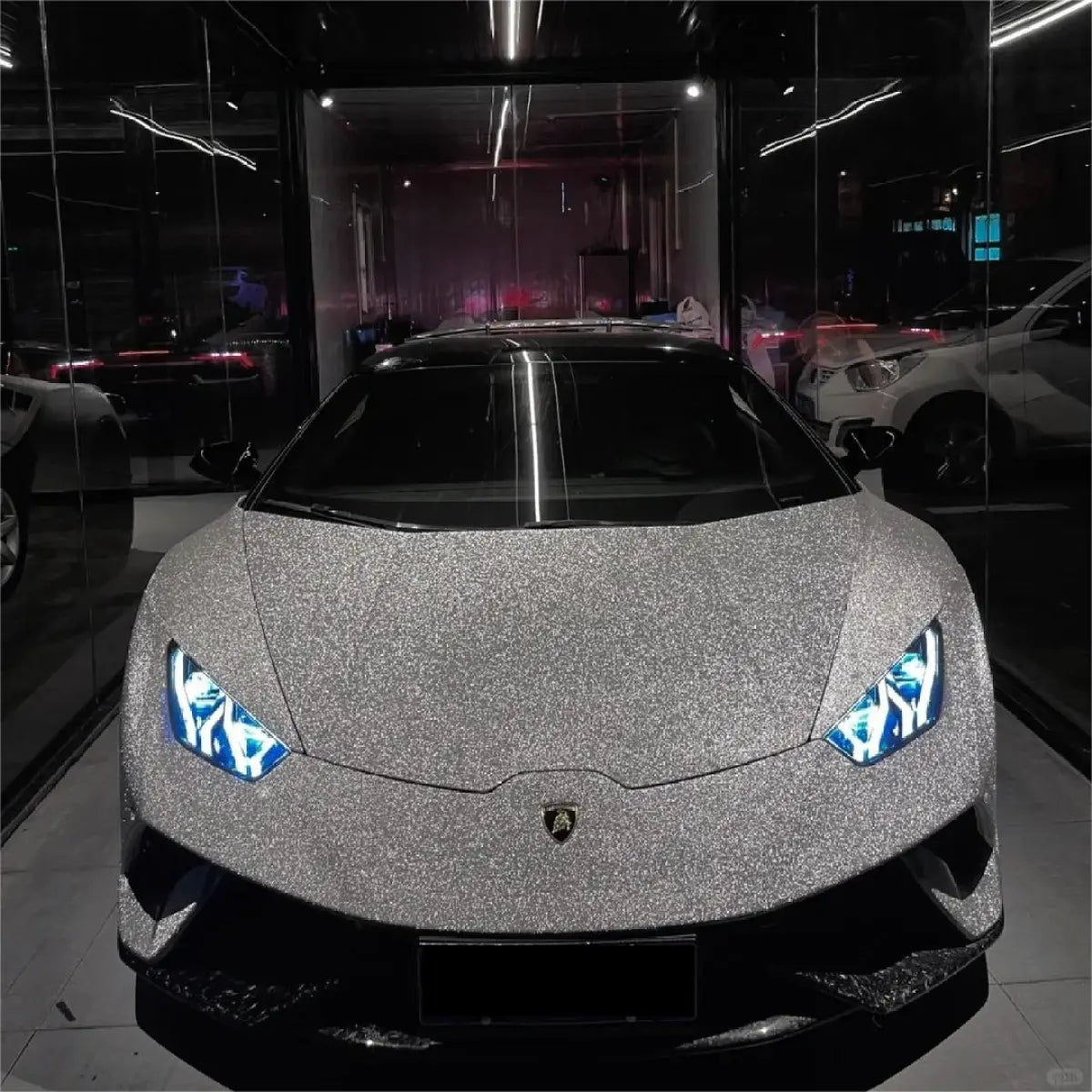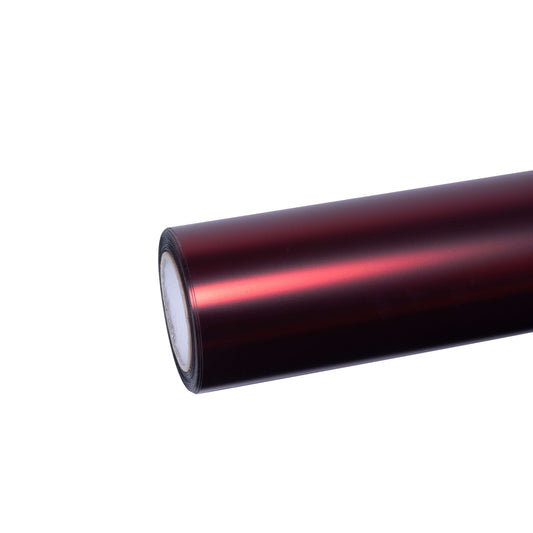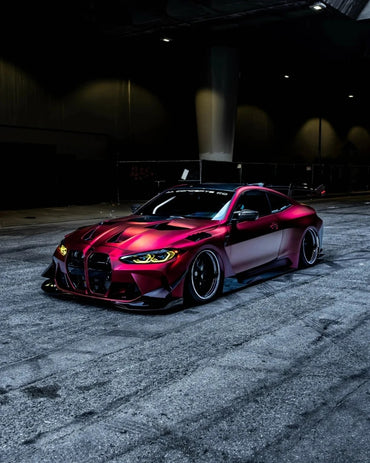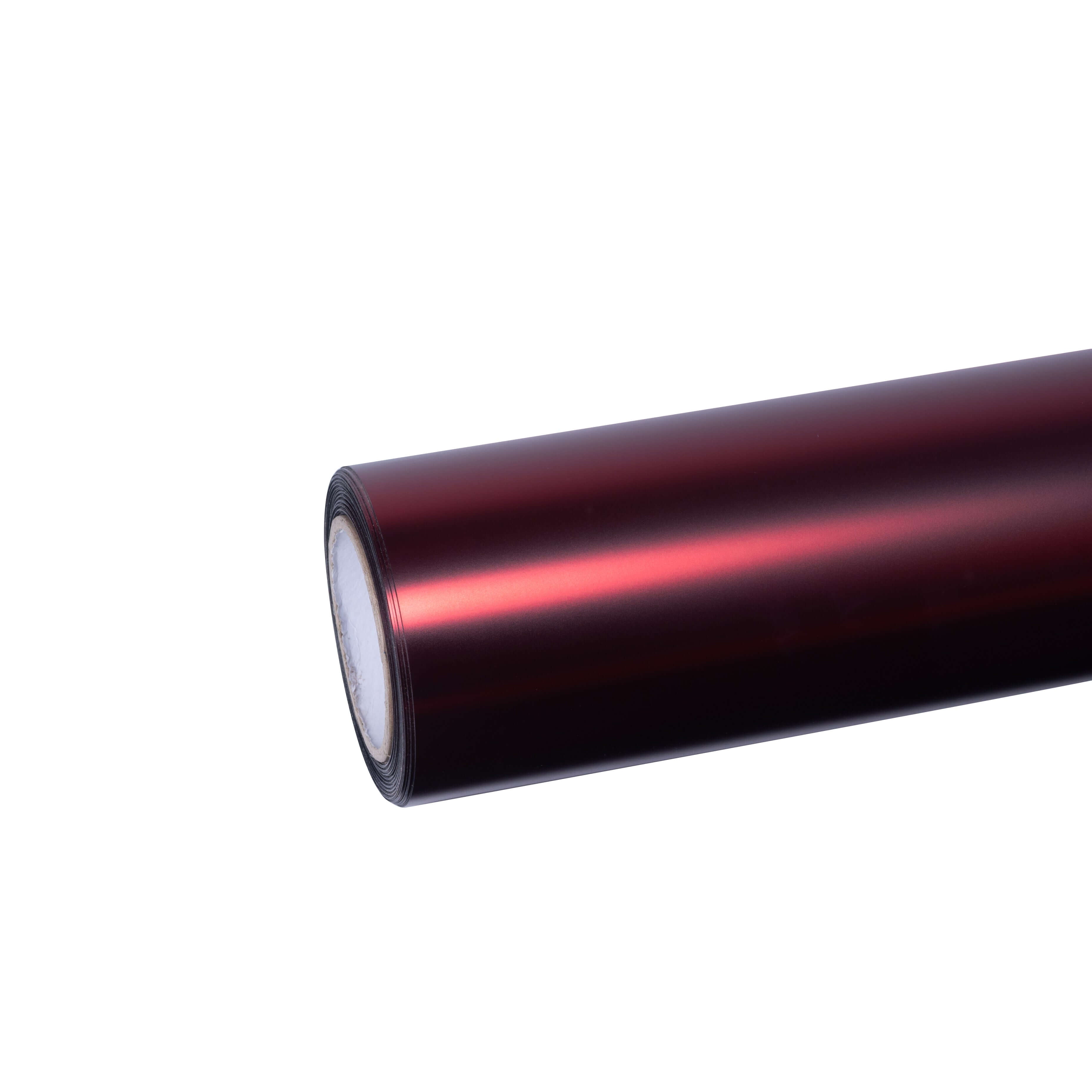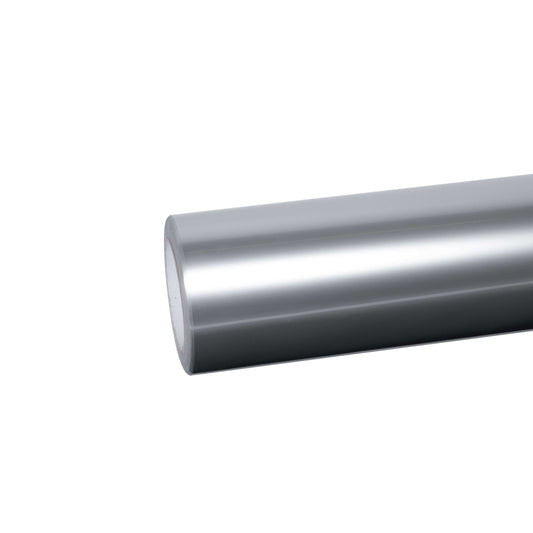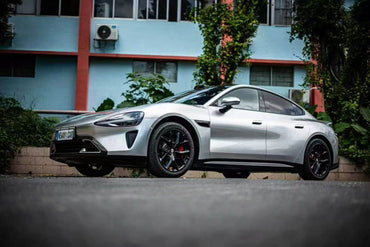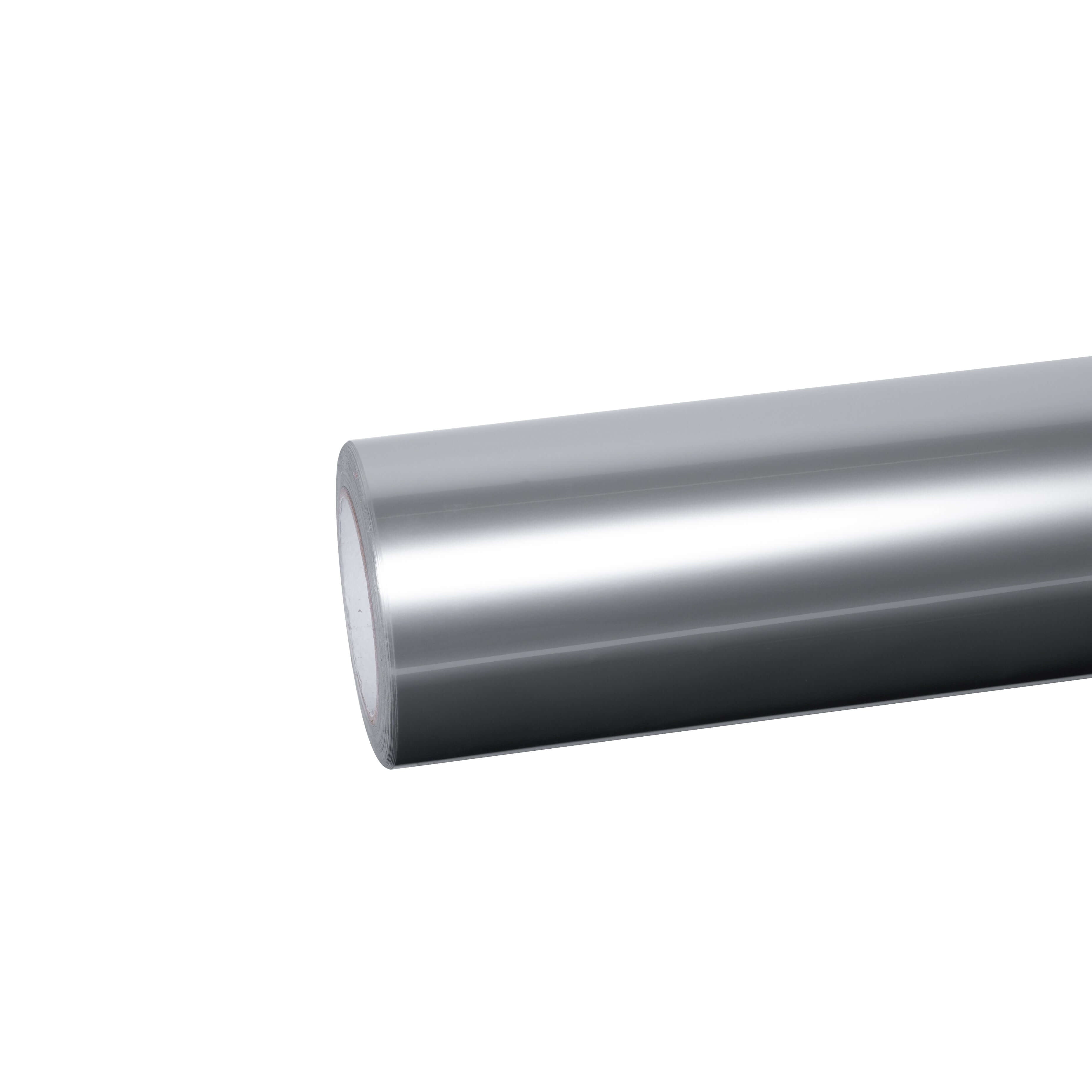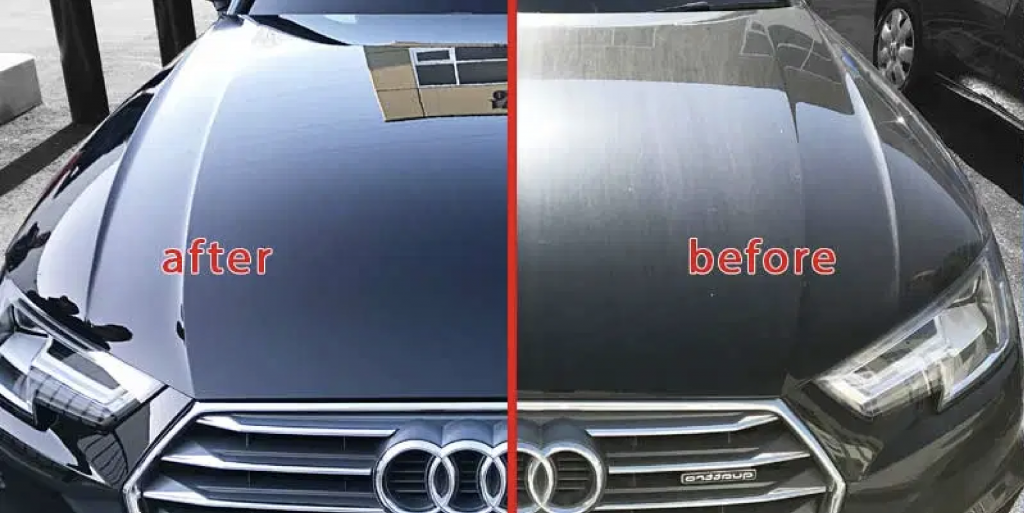Understanding Paint Protection Film: Your Vehicle's First Line of Defense
Paint protection film, commonly known as PPF or clear bra, represents a revolutionary advancement in automotive surface protection. This transparent thermoplastic urethane film creates a physical barrier between your vehicle's painted surfaces and the harsh realities of daily driving.
TPU paint protection film has emerged as the industry standard, accounting for over 82% of the global PPF market in 2025. The thermoplastic polyurethane (TPU) material offers exceptional properties that make it ideal for vehicle protection: superior flexibility, outstanding durability, optical clarity, and remarkable self-healing capabilities.
Sailifilm's TPU paint protection wrap collection showcases the latest advancements in protective film technology. Available in stunning colors from Crystal Sky Blue to Piano Black, these films don't just protect—they transform your vehicle's appearance while safeguarding the original paint beneath.
The Science Behind TPU Technology
Modern TPU films consist of multiple layers, each engineered for specific protective functions. The base adhesive layer bonds securely to your vehicle's paint without causing damage upon removal. The thick polyurethane core (typically 6-8 mils) absorbs impacts from road debris, stone chips, and minor abrasions. Finally, the clear coat top layer provides surface protection and enables the film's self-healing properties.
The self-healing characteristic of premium TPU films has revolutionized automotive protection. When minor scratches or swirl marks appear on the film's surface, applying heat—whether from hot water, a heat gun, or simply parking in the sun—causes the elastomeric polymers to return to their original smooth state. This remarkable feature keeps your vehicle looking flawless despite daily wear and tear.
Ceramic Coating: The Chemical Shield Your PPF Needs
While PPF excels at physical protection, ceramic coating provides chemical defense and surface enhancement. These liquid polymer solutions contain silica-based compounds that chemically bond to your vehicle's surfaces, creating a permanent protective layer.
Ceramic coatings deliver several critical benefits that complement PPF perfectly:
Extreme Hydrophobicity: The coating creates a water-repellent surface with contact angles exceeding 110 degrees. Water, mud, and contaminants bead up and roll off effortlessly, maintaining your vehicle's clean appearance between washes.
Chemical Resistance: Acidic contaminants like bird droppings, bug splatter, tree sap, and acid rain can etch into unprotected surfaces. Ceramic coatings provide a chemical barrier that prevents these substances from bonding to or damaging the underlying material.
UV Protection: Ultraviolet radiation causes paint oxidation and fading over time. Premium ceramic coatings absorb and reflect UV rays, preventing sun damage to both the PPF and the paint beneath.
Enhanced Gloss and Depth: Ceramic coatings amplify surface reflection, creating a mirror-like shine that makes colors appear deeper and more vibrant. This aesthetic enhancement is particularly striking on colored paint protection film installations.
Why Combining Ceramic Coating and PPF Creates Ultimate Protection
The synergy between ceramic coating and PPF creates a multi-layered defense system that addresses every aspect of automotive surface protection. Here's why this combination has become the preferred choice for luxury vehicle owners, enthusiasts, and anyone serious about vehicle preservation:
1. Extended PPF Longevity
Paint protection film faces constant assault from environmental contaminants. While TPU films resist many threats, certain substances can degrade the film over time. Applying ceramic coating over PPF extends the film's lifespan significantly.
UV Protection Enhancement: While quality PPF includes UV inhibitors, adding ceramic coating provides an additional layer of ultraviolet defense. This dual protection prevents the yellowing and degradation that can affect PPF after years of sun exposure.
Contamination Shield: Sticky substances like tree sap, road tar, and industrial fallout can bond to PPF surfaces, requiring harsh chemicals or aggressive cleaning methods for removal. These cleaning processes can damage the film's surface. Ceramic coating creates a sacrificial barrier that prevents contaminants from adhering directly to the PPF, making maintenance significantly easier.
2. Superior Hydrophobic Performance
While modern PPF possesses some water-repellent properties, ceramic coating elevates hydrophobicity to an entirely different level. The combination creates a surface so slippery that water sheets off in seconds, taking dirt and grime with it.
This extreme water repellency delivers practical benefits that go beyond aesthetics. Your vehicle stays cleaner longer, reducing washing frequency and the associated risks of introducing swirl marks or scratches during cleaning. When you do wash, the process becomes dramatically easier—contaminants rinse away with minimal effort.
3. Enhanced Aesthetic Impact
PPF preserves your paint's appearance, but ceramic coating enhances it. The coating's reflective properties amplify the depth and richness of your vehicle's color, creating a wet-look shine that turns heads everywhere you drive.
This aesthetic enhancement proves particularly impressive on specialty finishes. Whether you've chosen glitter sparkle car wraps, metallic vinyl wrap, or crystal vinyl wrap options, ceramic coating over your protective film intensifies the visual impact while providing superior protection.
4. Simplified Maintenance Routine
Vehicle owners consistently cite easier maintenance as one of the top benefits of the ceramic coating and PPF combination. The ultra-slick surface resists dirt accumulation, and contaminants that do settle on the surface release easily during washing.
This simplified maintenance translates to time savings and reduced risk of damage. Fewer washes mean less exposure to improper washing techniques, harsh chemicals, or abrasive materials that could compromise your protective layers. Additionally, the ceramic coating's chemical resistance means you can safely remove stubborn contaminants without resorting to aggressive methods that might damage the PPF.
5. Maximum Resale Value Protection
Every vehicle owner eventually faces the reality of resale or trade-in. The ceramic coating and PPF combination delivers unparalleled resale value protection by maintaining your vehicle in pristine condition throughout ownership.
Paint Preservation: The PPF protects the original factory paint from physical damage—chips, scratches, swirl marks—while the ceramic coating prevents chemical etching and fading. When removal time comes, you unveil flawless original paint that dramatically enhances resale appeal.
Documentation Value: Professional PPF and ceramic coating installations come with documentation and warranties that transfer to new owners. This verifiable protection history increases buyer confidence and justifies premium pricing.
Aesthetic Consistency: Vehicles protected with this combination maintain their showroom appearance for years. Prospective buyers immediately notice the difference between well-maintained protected vehicles and those showing typical wear and tear.
Application Best Practices: Maximizing Your Protection Investment
Achieving optimal results from the ceramic coating and PPF combination requires proper installation technique and sequencing. Understanding the correct application process ensures you maximize your protection investment.
Step 1: Professional Paint Correction
Before applying any protective layers, your vehicle's paint must be in perfect condition. Professional detailers perform paint correction to remove existing swirl marks, scratches, oxidation, and other imperfections. This critical step ensures the protective layers lock in a flawless finish rather than preserving existing damage.
Step 2: PPF Installation
Paint protection film always goes on first, applied directly to the corrected paint surface. Professional installers use specialized techniques to ensure bubble-free application with perfect alignment and invisible seams.
Consider strategic PPF placement based on your vehicle's usage and exposure. Full-body coverage offers maximum protection but comes at premium cost. Many owners opt for high-impact areas: front bumper, hood, fenders, side mirrors, door edges, door cups, and rocker panels. These zones face the greatest risk of damage and deliver the best protection-to-cost ratio.
Sailifilm's diverse car vinyl wrap collections allow for creative combinations. You might choose clear PPF for certain areas while using liquid chrome wrap or dual color dream vinyl wrap for accent sections, all protected with ceramic coating for consistent performance.
Step 3: Post-Installation Curing
After PPF installation, the film requires curing time before ceramic coating application. Most professionals recommend waiting 24-48 hours, allowing any installation solution to fully evaporate and the adhesive to achieve maximum bond strength.
Step 4: Surface Preparation for Ceramic Coating
Even though the PPF is brand new, proper surface preparation remains essential for optimal ceramic coating adhesion. Installers clean the film thoroughly using pH-neutral solutions, then perform a final wipe-down with isopropyl alcohol to remove any residual contaminants or oils.
Step 5: Ceramic Coating Application
Professional ceramic coating application requires precision and experience. Installers apply thin, even layers of coating to the PPF surface using specialized applicators. Multiple thin coats typically provide better results than single thick applications.
After application, the coating requires curing time—usually 24-48 hours for initial hardening, with full curing taking 7-14 days. During this period, keep the vehicle dry and avoid washing or contamination exposure.
Maintenance Excellence: Preserving Your Ultimate Protection
Proper maintenance ensures your ceramic coating and PPF combination delivers years of outstanding performance. Following these guidelines maximizes longevity and maintains optimal protective properties:
Regular Washing Protocol
Frequency: Wash your vehicle every 1-2 weeks, or more frequently if exposed to harsh contaminants. The ceramic coating's hydrophobic properties mean washes take less time and effort than unprotected vehicles.
Method: Always use the two-bucket hand wash method with pH-neutral automotive shampoo specifically designed for coated surfaces. Avoid automatic car washes—the harsh brushes and strong chemicals can damage both the ceramic coating and PPF.
Technique: Use high-quality microfiber wash mitts and towels. Work top-to-bottom to prevent dragging heavy dirt across clean surfaces. Rinse thoroughly and dry with clean microfiber drying towels or a forced-air dryer.
Spot Cleaning
Address contaminants immediately when possible. Bird droppings, bug splatter, and tree sap contain acids that can etch through ceramic coatings if left too long. The coating provides time to safely remove these threats, but prompt attention prevents any potential damage.
For stubborn contaminants, use dedicated spot cleaners safe for ceramic coatings and PPF. Avoid aggressive scrubbing—the protection layers do most of the work, requiring only gentle wiping motions.
Annual Inspection and Maintenance
Schedule annual inspections with your installer to assess the condition of both protective layers. Professional detailers can identify potential issues early—edge lifting on PPF, coating degradation in high-stress areas, or contamination buildup in hard-to-reach spots.
Many ceramic coating warranties include or recommend annual maintenance treatments. These topper applications refresh the coating's hydrophobic properties and extend overall longevity.
Cost Considerations: Investment vs. Value
The combined cost of professional PPF installation and ceramic coating represents a significant investment—typically ranging from $2,000 to $8,000+ depending on coverage area, vehicle size, and product quality. However, analyzing this cost against the benefits reveals exceptional long-term value.
Paint Damage Prevention: A single stone chip repair costs $50-150. Major panel repainting runs $500-1,500 per panel. Over several years of ownership, preventing just a few instances of damage offsets your protection investment.
Resale Value Enhancement: Protected vehicles command premium resale prices. Multiple automotive market analyses indicate properly maintained vehicles with documented protection systems sell for 5-15% more than comparable unprotected vehicles.
Time Savings: Easier cleaning and reduced maintenance needs save dozens of hours over vehicle ownership. For many owners, this convenience factor alone justifies the investment.
Peace of Mind: Beyond financial calculations, protection systems deliver intangible peace of mind. Drive confidently knowing your vehicle's appearance is safeguarded against common threats.
Specialty Applications: Beyond Standard Vehicles
While luxury sedans and sports cars represent primary markets for ceramic coating and PPF combinations, these protection systems benefit virtually any vehicle type:
Electric Vehicles: EV owners particularly value these protection systems. Electric vehicles often feature specialized paint finishes and their higher purchase prices justify premium protection. The combination shields charging port areas, which face unique contamination risks.
Commercial Vehicles: Fleet managers increasingly adopt PPF and ceramic coating for commercial vehicles. Protected surfaces maintain professional appearance, resist harsh cleaning chemical damage, and reduce long-term maintenance costs across entire fleets.
Motorcycles: Two-wheeled enthusiasts protect their bikes with specialized PPF applications on fuel tanks, fairings, and high-impact areas, topped with ceramic coating for comprehensive protection.
Recreational Vehicles: RVs and campers face extreme environmental exposure. PPF protects front caps and high-impact areas while ceramic coating simplifies the challenge of maintaining large surface areas.
Special Finish Considerations
Sailifilm's diverse product range enables unique protection strategies for specialty finishes:
Matte Finishes: Ultra matte wrap installations benefit enormously from specialized matte-safe ceramic coatings. Standard coatings can add unwanted gloss to matte surfaces, but formulations designed for flat finishes preserve the intended appearance while providing all protective benefits.
Carbon Fiber: 3D carbon fiber wrap patterns create striking visual appeal. Ceramic coating enhances the three-dimensional effect while protecting the intricate texture from contamination that could dull the appearance.
Color-Shifting Films: Advanced finishes like rainbow laser vinyl wrap showcase multiple colors depending on viewing angle. Ceramic coating over these specialty films ensures the optical effects remain vibrant and undimmed by contamination or degradation.
Future-Proofing Your Investment
The automotive protection industry continues evolving, with ongoing innovations in both PPF and ceramic coating technology. Understanding emerging trends helps you make informed decisions and potentially plan for future upgrades:
Graphene-Enhanced Coatings: Next-generation ceramic coatings incorporate graphene particles, offering even greater hardness, heat resistance, and hydrophobic properties than traditional formulations.
Thicker PPF Options: Manufacturers now offer 10+ mil films for extreme protection applications. These ultra-thick options provide unparalleled impact resistance for vehicles facing severe road conditions.
Self-Healing Ceramic Coatings: Research into self-healing ceramic technologies promises coatings that automatically repair minor scratches and swirl marks, combining PPF's self-healing benefits with ceramic coating's chemical protection.
Smart Protection Systems: Emerging technologies include protective films with embedded sensors that monitor film condition and alert owners to potential issues before they become problems.
Making Your Decision: Is This Combination Right for You?
The ceramic coating and PPF combination delivers unmatched protection, but determining if it's right for your situation requires honest assessment of several factors:
Vehicle Value: Higher-value vehicles justify premium protection more easily. However, even affordable vehicles benefit from protection systems, particularly if you plan long-term ownership.
Usage Patterns: Daily drivers accumulating high mileage in harsh conditions gain maximum benefit. Weekend pleasure vehicles face fewer threats but still benefit from protection during storage and use.
Ownership Timeline: If you plan to keep your vehicle for many years, protection systems deliver compounding value through continuous paint preservation. Even short-term owners benefit through enhanced resale appeal.
Personal Priorities: Some owners view their vehicles as appliances requiring minimal investment beyond basics. Others see vehicles as significant assets worthy of premium care. Neither approach is wrong—protection decisions should align with your values.
Conclusion: The Ultimate Protection Partnership
Combining ceramic coating with paint protection film represents the pinnacle of automotive surface protection. This powerful partnership addresses every category of potential damage—physical impacts, chemical contamination, UV degradation, and aesthetic deterioration—while delivering additional benefits through enhanced gloss, easier maintenance, and superior resale value.
Sailifilm's comprehensive collections, from TPU paint protection wrap to colored paint protection film, provide the foundation for ultimate vehicle protection. When topped with professional ceramic coating, these films transform from excellent protection into an impenetrable shield that keeps your vehicle looking showroom-fresh for years.
Whether you drive a luxury sedan, sports car, SUV, or any vehicle you want to protect, the ceramic coating and PPF combination offers unmatched defense against the elements. Don't settle for partial protection when complete confidence is within reach. Explore Sailifilm's best sellers and quality wrapping tools, or request sample kits to experience the quality firsthand.
Your vehicle deserves the ultimate protection. Make it happen with Sailifilm's premium protective films topped with professional ceramic coating—because exceptional vehicles demand exceptional care.
